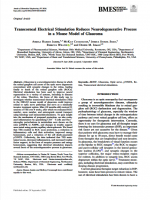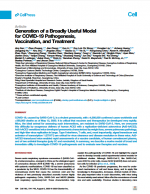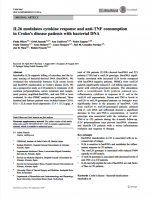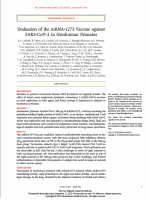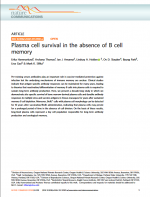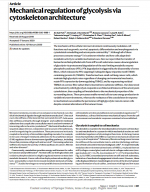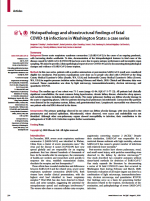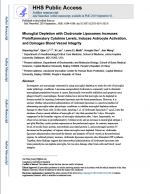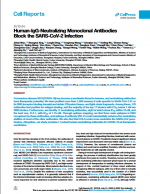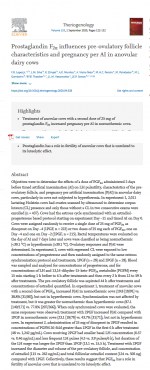12.10.2020
Transcorneal Electrical Stimulation Reduces Neurodegenerative Processi... Annals of Biomedical Engineering, 2020
Abstract Glaucoma is a neurodegenerative disease in which the retinal ganglion cell axons of the optic nerve degenerate concomitant with synaptic changes in the retina, leading finally to death of the retinal ganglion cells (RGCs). Electrical stimulation has been used to improve neural regeneration in a variety of systems, including in diseases of the retina. Therefore, the focus of this study was to investigate whether transcorneal electrical stimulation (TES) in the DBA2/J mouse model of glaucoma could improve retinal or optic nerve path...
05.10.2020
Generation of a Broadly Useful Modelfor COVID-19 Pathogenesis,Vaccinat... Cell, 2020
Summary COVID-19, caused by SARS-CoV-2, is a virulent pneumonia, with >4,000,000 confirmed cases worldwide and >290,000 deaths as of May 15, 2020. It is critical that vaccines and therapeutics be developed very rapidly. Mice, the ideal animal for assessing such interventions, are resistant to SARS-CoV-2. Here, we overcome this difficulty by exogenous delivery of human ACE2 with a replication-deficient adenovirus (Ad5-hACE2). Ad5-hACE2-sensitized mice developed pneumonia characterized by weight loss, severe pulmonary pathology, and hi...
30.09.2020
IL26 modulates cytokine response and anti-TNF consumption in Crohn's d... J Mol Med (Berl), 2017
Abstract Interleukin IL26 supports killing of microbes and the innate sensing of bacterial-derived DNA (bactDNA). We evaluated the relationship between IL26 serum levels and bactDNA translocation in Crohn's disease (CD). We ran a prospective study on CD patients in remission. IL26 common polymorphisms, serum cytokines and complement protein, amplified-bactDNA, and anti-TNF-α were evaluated. In vitro PBMC analysis was performed. Three hundred and thirteen patients were included (mean CDAI: 83.6 ± 32.8; mean fecal calprotect...
11.09.2020
Evaluation of the mRNA-1273 Vaccine against SARS-CoV-2 in Nonhuman Pri... The New England Journal of Medicine, 2020
Vaccines to prevent coronavirus disease 2019 (Covid-19) are urgently needed. The effect of severe acute respiratory syndrome coronavirus 2 (SARS-CoV-2) vaccines on viral replication in both upper and lower airways is important to evaluate in nonhuman primates. In this study, nonhuman primates received 10 or 100 μg of mRNA-1273, a vaccine encoding the prefusion-stabilized spike protein of SARS-CoV-2, or no vaccine. Antibody and T-cell responses were assessed before upper- and lower-airway challenge with SARS-CoV-2. Active viral replication...
28.08.2020
Plasma cell survival in the absence of B cellmemory Nature Communications, 2017
Abstract Pre-existing serum antibodies play an important role in vaccine-mediated protection againstinfection but the underlying mechanisms of immune memory are unclear. Clinical studiesindicate that antigen-specific antibody responses can be maintained for many years, leadingto theories that reactivation/differentiation of memory B cells into plasma cells is required tosustain long-term antibody production. Here, we present a decade-long study in which wedemonstrate site-specific survival of bone marrow-derived plasma cells and durable an...
21.08.2020
Mechanical regulation of glycolysis via cytoskeleton architecture Nature, 2020
Recently, Park et al. identified an actin-TRIM21-PFK mechanistic pathway utilized by cells to adapt their metabolic activity in response to mechanical cues; this is the first report to identify a direct link between mechanical inputs from the cell environment and metabolic responses. Human bronchial epithelial cells (HBECs) were exposed to stiff or soft substrates to mimic environmental mechanical stimuli. Analysis of HBECs exposed to these different stimuli, using an array of metabolic, biological, and molecular tools, identified a signif...
14.08.2020
Histopathology and ultrastructural findings of fatal COVID-19 infectio... The Lancet, 2020
Severe acute respiratory syndrome coronavirus 2 (SARS-CoV-2) is the cause of an ongoing pandemic, with increasing deaths worldwide. To date, documentation of the histopathological features in fatal cases of the disease caused by SARS-CoV-2 (COVID-19) has been scarce due to sparse autopsy performance and incomplete organ sampling. Bradley at al. aimed to provide a clinicopathological report of severe COVID-19 cases by documenting histopathological changes and evidence of SARS-CoV-2 tissue tropism. The primary pathology observed in this cohort...
05.08.2020
Microglial Depletion with Clodronate Liposomes Increases Proinflammato... Mol Neurobiol., 2019
Abstract Investigators are increasingly interested in using microglial depletion to study the role of microglia under pathologic conditions. Liposome-encapsulated clodronate is commonly used to eliminate macrophage populations because it causes functionally irreversible inhibition and apoptosis once phagocytized by macrophages. Recent studies have shown that microglia can be depleted in disease models by injecting clodronate liposomes into the brain parenchyma. However, it is unclear whether intracerebral administration of...
30.07.2020
Human-IgG-Neutralizing Monoclonal Antibodies Block the SARS-CoV-2 Infe... Cell Reports, 2020
A team of scientists, including researchers from Active Motif China, developed recombinant antibodies targeting SARS-CoV-2 and their work was recently published in the journal Cell Reports. Several of these antibodies were strong binders to the SARS-CoV-2 Spike S1 protein and were able to effectively neutralize infectivity of the virus, suggesting that they could be further developed and used as therapeutics against COVID-19. Learn in the following article how Wan et al. identified 11 potent neutralizingantibodies against COVID-19 from 11con...
29.06.2020
Prostaglandin F2α influences pre-ovulatory follicle characteristics an... Theriogenology, 2020
Highlights Treatment of anovular cows with a second dose of 25 mg of prostaglandin F2α increased pregnancy per AI in normothermic cows. Treatment with prostaglandin F2α had minor impacts on LH pulsatility, but increased the size and estradiol content in the pre-ovulatory follicle. Prostaglandin has a role in fertility of anovular cows that is unrelated to its luteolytic effect. In a recent



